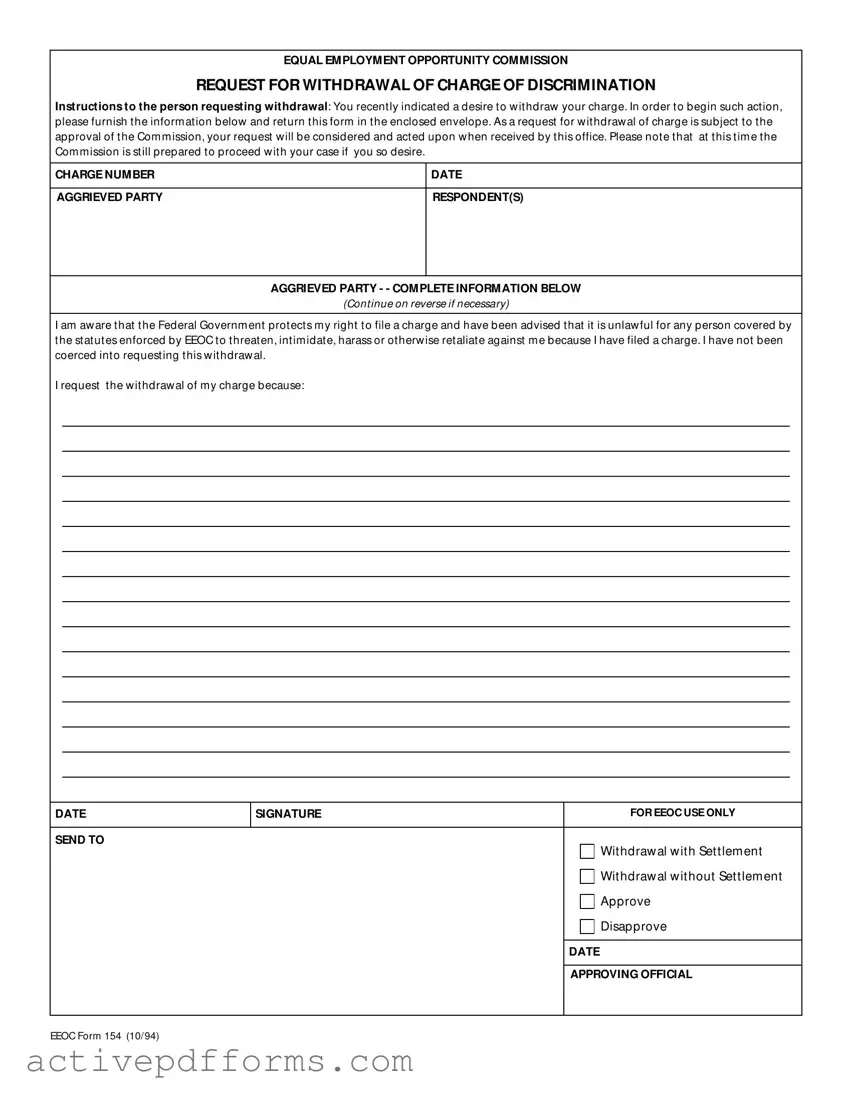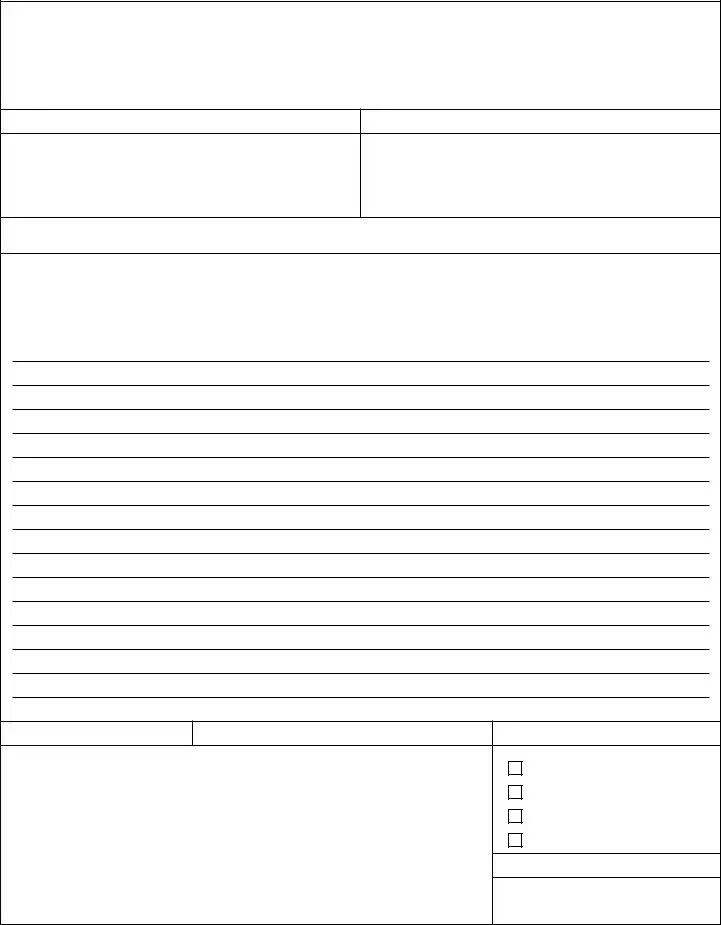In the landscape of employment law, navigating the procedural aspects can often seem daunting for individuals who believe they have been subject to unfair treatment in the workplace. A vital tool in these proceedings is the Equal Employment Opportunity Commission's (EEOC) Form 154, designated for the request of withdrawal of a charge of discrimination. This document provides individuals, who have previously filed a charge of discrimination, with an official avenue to retract their complaints, should they wish to do so. It is imperative to understand that this step is not merely administrative but is subject to the approval of the EEOC, underlining the seriousness with which such a request is treated. Completing and submitting this form initiates a process where the aggrieved party must clearly state their understanding that the federal government protects their right to file such a charge and that they have not been subject to coercion in deciding to withdraw their dispute. Additionally, the form implicitly reminds the complainant of the Commission's readiness to proceed with the case, should they reconsider. This framework ensures that the decision to withdraw is made with full awareness of the rights and protections afforded to individuals under the statutes enforced by the EEOC. The delineation between withdrawals with settlements and those without further highlights the complexities surrounding the resolution of discrimination charges, underscoring the criticality of informed decision-making in these matters.

